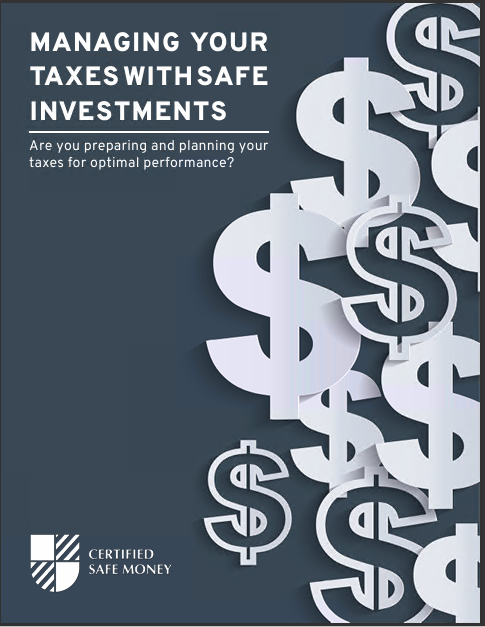Key Takeaways
-
An Indexed Universal Life (IUL) policy provides both protection and growth potential, giving you a flexible tool that adapts to changing economic conditions.
-
By understanding timelines, tax implications, and strategic withdrawal options, you can design a retirement plan that adjusts to inflation, market cycles, and personal needs over time.
Why Flexibility Matters in Today’s Retirement Planning
The economic environment in 2025 is more complex than ever. With inflationary pressures, fluctuating interest rates, and evolving tax laws, you cannot rely solely on traditional retirement accounts. Your financial strategy should be capable of adapting to uncertainty. An IUL policy is one of the few tools that combines lifelong protection with the ability to adjust your income approach as conditions change.
Unlike fixed products that lock you into one path, an IUL policy provides options. Its growth is linked to market indexes, giving you the potential to benefit from positive market trends without risking direct exposure. This flexibility is especially important as retirement timelines now stretch longer due to increased life expectancy.
How an IUL Policy Builds Retirement Stability
An IUL policy functions as both life insurance and a financial asset. Premiums you pay support the death benefit while also building a cash value account. This account has several features:
-
Index-linked growth: Cash value grows based on the performance of selected market indexes, subject to participation rates and caps.
-
Downside protection: While returns are linked to the market, losses are limited by a guaranteed floor that prevents negative credits.
-
Tax advantages: The cash value grows tax-deferred, and withdrawals or loans can be structured to be tax-advantaged.
These features allow you to accumulate funds that can supplement retirement income, hedge against inflation, and provide liquidity for unexpected expenses.
Timeline Planning: Short, Medium, and Long-Term Strategies
To make an IUL policy work effectively, you need to consider different time horizons.
1. Short-Term (Years 1–10)
During the first decade of your policy, the focus is on funding. Cash value growth is slower at this stage because of policy charges and the time needed for compounding. It is crucial to commit to consistent premium payments and avoid unnecessary withdrawals. Building a strong foundation ensures long-term performance.
2. Medium-Term (Years 10–20)
By this stage, the cash value begins to expand more significantly. This is when policy loans and withdrawals may become a practical option. You could use funds to cover college expenses, a business investment, or healthcare costs, while still keeping the policy active. Strategic planning here ensures you do not erode long-term growth.
3. Long-Term (Years 20 and beyond)
In later years, your policy matures into a reliable retirement asset. With decades of tax-deferred growth, you may access substantial cash value. Many retirees use IUL withdrawals or loans to create a flexible income stream that supplements Social Security, pensions, or other savings. The death benefit also remains intact, supporting legacy goals.
Adapting to Economic Shifts
Economic conditions are not static, and your retirement strategy should not be either. An IUL policy provides room to adapt when external factors change:
-
Inflation protection: Since cash value growth is linked to market performance, it has the potential to outpace inflation over the long run.
-
Interest rate changes: Traditional fixed accounts may struggle when rates shift, but IUL crediting strategies offer more adaptability.
-
Tax law updates: If tax rates increase, having access to tax-advantaged withdrawals from an IUL can protect your retirement income.
Balancing Growth and Risk Management
One of the greatest advantages of an IUL policy is its ability to balance opportunity with protection. Market-linked growth provides upside, while the floor ensures that negative market years do not wipe out your gains. This built-in risk management allows you to stay invested through cycles without panic-driven decisions.
By comparison, direct market investments expose you to full volatility, and fixed products may not keep up with inflation. An IUL policy offers a middle ground.
Withdrawal and Loan Strategies for Retirement Income
A key feature of an IUL is the ability to access your accumulated cash value during retirement. The most common strategies include:
-
Policy loans: You can borrow against your cash value while keeping your policy intact. Loans accrue interest but do not immediately trigger taxes.
-
Withdrawals: Structured properly, withdrawals allow you to access part of your cash value tax-advantaged up to your cost basis.
-
Combination approach: Using a mix of loans and withdrawals provides flexibility and can minimize tax burdens.
The goal is to create a stream of income that adjusts to your needs while preserving long-term policy health.
Tax Considerations That Shape Your Retirement Outcomes
Taxes are one of the most significant factors in retirement planning. An IUL policy helps in several ways:
-
Tax-deferred growth: Your cash value grows without immediate tax liability.
-
Tax-advantaged access: Loans and structured withdrawals can be taken without triggering income taxes, provided the policy remains in force.
-
Estate planning benefits: The death benefit generally passes to beneficiaries tax-free, helping preserve wealth across generations.
By 2025, tax law changes continue to highlight the importance of diversification. Relying entirely on taxable retirement accounts could increase your future liabilities. An IUL policy creates an alternative stream of income that is not tied to traditional tax rules.
The Importance of Policy Design and Customization
An IUL is not a one-size-fits-all product. How you design it matters greatly to its performance. Key considerations include:
-
Premium funding level: Higher funding early on accelerates cash value growth.
-
Index selection: Different crediting options allow you to align with your risk tolerance.
-
Loan structure: Planning how you will borrow from the policy ensures tax efficiency and sustainability.
-
Cost management: Understanding policy charges and ensuring you do not overextend withdrawals keeps the plan stable.
A properly structured IUL policy can serve as a cornerstone of your retirement plan, but a poorly designed one may underperform. Working with a professional is crucial.
Longevity and Legacy Goals
Retirement today is not just about covering expenses until you pass away. It also involves ensuring your assets last and potentially leaving wealth for future generations. Since many Americans live 20–30 years in retirement, the longevity factor cannot be ignored. An IUL policy supports both needs:
-
Sustainable income: The cash value can be tapped to provide flexible withdrawals for decades.
-
Death benefit security: Even if you use the cash value, the death benefit remains in place to support heirs or charitable causes.
Practical Steps to Begin Building With an IUL Policy
If you are considering adding an IUL policy to your retirement strategy, here are some steps to take:
-
Evaluate your retirement goals: Consider your target retirement age, income needs, and legacy objectives.
-
Assess funding ability: Determine how much you can consistently contribute in the early years.
-
Work with a licensed professional: Designing a policy requires expertise to avoid pitfalls and maximize long-term benefits.
-
Review regularly: Economic conditions shift, so check your policy every few years to ensure it still aligns with your goals.
Building Security That Adjusts With You
Creating a retirement plan in 2025 requires more than static tools. You need financial strategies that can evolve with shifting economic conditions. An IUL policy provides the unique combination of protection, growth, and adaptability. By structuring your policy correctly and staying mindful of how you access its value, you can secure a retirement income stream that is resilient, tax-efficient, and responsive to change.
If you are ready to explore how an IUL policy can fit into your retirement planning, get in touch with a licensed professional listed on this website for guidance tailored to your specific goals.












